As Italians are aware, the dialects of Italy reflect the rich and diverse historical landscape of the country throughout the millennia. No vernacular seems to puzzle Italians from other regions like dialects from the province of Bari. Being the daughter of Molfettese that immigrated immediately after WWII, I will show the beauty and intricacy of the spoken word of their city, Molfetta, a city on the Adriatic coast sixteen miles west-northwest of the provincial capital, Bari.
Although the parlance of peasants, poor farmers, fishermen, and uneducated was discouraged after World War II and many southern Italians only speak Italian, lately the rich heritage of the dialect has been recognized and has even been introduced as a subject to be studied. People realized that as the septuagenarians and octogenarians die a library of speech patterns is also dying away.
There was a time when Italians disassociated themselves with the vernacular of the poor and illiterate and would not be caught dead speaking it in public. In 1951, 35.4% of the entire Italian population had stopped using the dialect indigenous to their area as a means of communication. Only seventeen short years later, in 1968, 50% no longer used the dialect in public or work situations (Devoto, 1988). Fortunately for us all, the Molfettese language is being preserved by historians as well as town associations which are even publishing essays and poetry in this dialect and other Barese idiomatic speech.
Molfettese is a fusion of the many sounds and intonations inherited from the Messapici and the Sanniti who immigrated from the East to Apulia over 2,000 years before Christ and the from languages of subsequent invaders—the Romans, Greeks, Normans, the Arabs, the French, the Spanish. Latin and its grammar serve as the frame on which the other languages are hung. This blending has created a sound unique to the area; it is not an especially pleasant and melodic sounding language, however it is every expressive and descriptive.
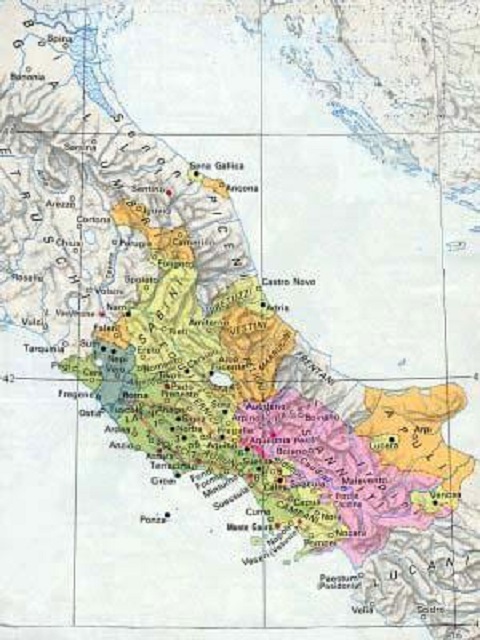
The language, with its staccatissimo sounds, seems to reflect the harsh existence the ancient tribes and other inhabitants of this area had endured throughout the millennia. The language is made up of many fragments that are woven into sentences that at times has the structure of Latin and at others it bears little or no connection to Rome whatsoever.
The “sc” sound dominates every day’s speech and is derived from the Sanniti, an ancient tribe. This sound makes the language difficult for Italians from the north to the south to understand. Fierce warriors, the Sanniti, were descents of the Osca and Sabelli tribes. Coming across the Adriatic Sea around 1500 B.C., they settled in the south-central region of Italy. Their capital, Capua, is located sixteen miles north of Naples in the province of Caserta, Campania. There they interfaced with the Greeks, Messapici, Romans and Etruscans using their own language. Often they were the intermediaries in trade or war negotiations. It took Rome almost a century to finally subjugate them and that accounts for the Latinization of the dialects of Campania and Puglia. In English, “let’s go.” translates to “andiamo” in Italian. In Molfettese, it is “sci me ninne.” The sounds and words used have no relation to Latin. The “sc” is also used in place of the Italian “g” in words such as “scennere” for “gennaio” which is January, “sciugne” for “giugno,” which is June. Notice the word knee, “ginocchio” in Italian, is “scinuchie” in Molfettese. The Italian word is modified having a Sanniti beginning “sc” and a Greek “u” sound in the middle and a final slavic “e” sound from across the Adriatic.
Another tribe which left a distinct mark on the Molfettese/Barese dialect is the Messapici, an Indo-European tribe which came to Apulia from the Bosnia area at about the same time as the Sanniti. Where exactly they lived before arriving in Puglia is anyone’s guess since it was a semi-nomadic culture that farmed areas for a while, and then moved on.
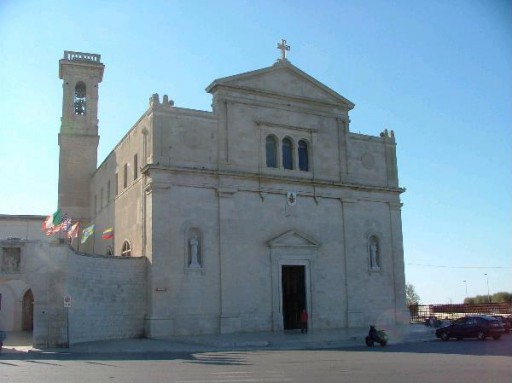
The plain where the Church of the Madonna dei Martiri stands, next to il Pulo, a circular cave 75 feet deep and one third of a mile wide is where this tribe settled. By 600 B.C., they were a nation of farmers and horse breeders living peacefully with the other peoples in the area and trading with the peoples of the Middle East. The tower used for defense and communication was a Messapic contribution to the landscape. In language, the Messapici influence is found in the use of the consonant sounds of “mb,” “nd,” and “sd” (Devoto & Giacomelli, 1988). Look at this Molfettese saying: “Nesciaum’e nesce mbarate,” which in Italian is “Nessuno nasce imparato,” and one can easily see the insertion of Messapi, Sanniti sounds and of course of Latin.
Two other consonant sounds are exchanged for another; the “p” sound and the “l” sound. Molfettesi substitute the “ch” sound for the “p” sound. For instance, from the Italian, “più” (more) becomes a Molfettese “chiu,” while “piena” (full) becomes “chaine” (Vittore Pisano, 1971). The “l” can also become “d” as is seen in the Molfettese word “bedde” (beautiful), which is “bella” in Italian. The sentence in Molfettese “Mo me ne voche,” “I’m going now,” is “Adesso me ne vado” in Italian and it demonstrates Latin words mixed with Greek, and Slavic fragments.
The vowels sounds used in Molfettese are the standard Latin a, e, i, o and u sounds. However, in many cases the Italian “e” and “i” sounds are transformed. The “e” sound converts to “ai,” or “i,” and even “ei” at times, while the “i” sound changes to “ei.” An example is found in the word husband which in Italian is “marito”. In Molfettese it is “mareite”, the “i” changing to “ei” (Devoto & Giacomelli, 1988).
All these deviations would be daunting if it were not for the fact that the majority of the language’s vocabulary has an Italian base. A foreign twist here and there does not impede communication nor is it difficult to decipher once you get the hand of it. Take the words “last week.” Molfettesi say – “la semene pasate.” Compare the Spanish –“la semana pasada” with the Italian “la scorsa settimana;” one can easily see the Spanish influence and yet is intelligible to the Italian.
Occasionally, one does find a word that bears no resemblance whatsoever to Italian. Some examples of peculiar dialectal words are the following:
| Molfettese | English | Italian | Origin |
| attenne | father | padre | Norman |
| uaglio | boy | ragazzo | Arabic |
| crai | tomorrow | domani | Greek |
| gaddaine | chicken | gallina | Dalmatian |
All these curious variations create a most interesting language. Examples are found in the poetry, proverbs and sayings which have been handed down verbally, generation after generation.
Recorded for posterity by Molfettese historian Gerardo de Marco, the following poems, proverbs and sayings, whose authors are anonymous and exist only in dialectal form, effectively guide one through the linguistic world of the Molfettesi. In addition, their fears, desires and goals are portrayed.
POETRY (all poetry from Gerardo De Marco’s books unless otherwise stated)
Farmers and the townsfolk are often lulled to sleep by the sound of the many cicadas. In fact, in one particular area which abounds with cicadas, an ancient tower is named for them — the Cicaloria.
Chend e chende la cecale
sotto ciele du meiese d’aguste
se ne preiesce cure de foere
ca la vigne fasce umuste.
Edd’asoele addevaiene
ci la staggioene
ave da l’esse bboene.
The cicada sings and sings
under the August sky
the farmer is gladdened
because the vineyard begins to display
He foresees
the season will be a good one.
Each evening old mariners would pray when the sun sets on the horizon. They would say a Hail Mary, an Our Father, a Glory Be and this short prayer.
Lun’a Sende ca te so viste
arrachemmmenem’o coere de Criste
quatte grazeie m’ha da fa
liberemi chire figghie
da mort subetenie,
da desgrazie, da chen’arraggiat’
e da gendte de la strate
Holy Moon, now that I see you
Entreat to the heart of Christ
four favors that he ought to give me
free my children
from sudden death
from misfortune, mad dogs
and from the street people
The wind can be both friend and foe to the seamen as this poem attests.
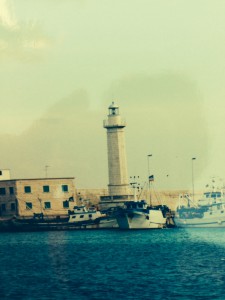
O viend’o viede nen me la chetela
ca tenghe la chiurme mi tott’a melate
ci cusse viagge dure nu alte meise
mengh’i la pelle port’a la case mi
o viend’o viende ca emmeiene Send i Quarende
mbuppe mbuppe fanne sci a lu levende
Oh wind, Oh wind don’t shake
I have all of my crew sick
if this trip lasts another month
not even my skin will arrive home
oh wind oh wind that sends the Holy Forty (type of wind)
over the stern, over the stern, let’s go east
Rope-making by hand is an occupation which has existed in Molfetta for centuries. Then, it involved treading the hemp on the hooks of a contraption that twirled around and looked like a pinwheel. Today, state-of-the-art machines do the work that was done by hand.
U feschelare u feschelare
totte la dai a fatega
se rompe la mescioele
e se grattu pemedoele.
The rope-maker the rope-maker
all day long working
the pinwheel breaks
and he scratches his tomato.
The following is a rhyme that is used when a child loses his first tooth.
Fueche fueche
pigghiet’u vecchi’e demm’u nueve
titte titte
emminue dritte dritte
chieng’a chienghe
fau ammene bienghe bienghe
Fire fire
take the old and give me the new
Roof roof
let it come out straight
Rock rock
let it grow white white
This rhyme was recited to the young, and newcomers in the hope they would obey the rule of returning inside the city’s walls when the bell rang in the evening.
Quenne soene l’Avemmeri ve le morte pe la vi,
che ne mezz’e che ne trombe, cure ci acchi’u
sdrellombe
When the Ave Maria sounds death goes through the
streets
With a cane and a horn whoever meets up with him is
cut to pieces.
This ditty was recited at Christmastime.
U Netale
Ci vu fa u Netale chendende
prima paghe la case e po inghiet’u vende
Ci vu fa u Netale aggarbate
pettele, fritele’e carteddate
Ci vu fa u Natale bueone
mengete ne frittel’e spare nu truene
La vescigghie de Netale
cime de rap’e do cecale,
nu becchiere de vreddeire
e nu vase all a megghiere (Giacinto Panuzio, 1930)
Christmas
If you want to make a happy Christmas
first pay the rent and then fill your belly
If you want to make a proper Christmas
potato puffs, fried, stuffed turnovers, airy dough
If you want to make a good Christmas
eat fried dough and fart
Christmas Eve
broccoli rabe and fish
a glass of white wine
and a kiss to the wife
The rhymes and poems above are a sampling of the many which exist in dialectal form. As the Italian language gained a foothold on the region’s vernacular, poets began expressing themselves in Italian. The following are a very minute sample of modern Italian poetry by Molfettese authors.
The following poem demonstrates how Molfetta’s church bells were rung to signal an upcoming event or warning. It was written in 1923 by Molfettese poet, Giacinto Panunzio.
La Nebbia: cosa qui rara
Insolito suonare di campane
O perché? si domanda ognun curioso
Com’e allegra la Chiesa questa sera!…
Forse in onore della Candelora?
Ma passa un’ora e due… Che cos’è
e…din din monotono a distesa
a quattr’ore di notte…S’impazzata
Il campanaro della Chiesa Vecchia?
Gesumaria, che avviene?
S’abbandona il bracier, s’esce di casa
A domandare
Dalle “Camera Nuove” in subbuglio
Scialle e painelle scendono le donne
Degli uomini che sonno sul mare
E la nebbia. O dov’è la Lanterna?
O dov’è il Lanternino?
…Un mare di nebbia sul mare
Trema di suoni di campane
Or suona anche la squilla del Convento
Madonna dei Martiri
Fa’ che i tuoi marinari e pescatori
Sentano questo strano scampanare
E dopo aver corso tanto mare
Non s’urtino, non muoian proprio in porto.
“The Fog — Something So Rare”
Strangely the bell rings
But why? everyone asks curiously
How jolly the church is tonight!
It must be in honor of Candeloro
One hour passes and two…What is it?
It’s a monotonous clang clang at full peal
At four in the morning…Has the bell ringer
of the Old Church gone crazy?
My goodness, what’s happening?
Abandoning the brazier,
out of the house they come to ask
From the “New Rooms” in confusion
In shawls; and slippers the ladies come out
Of the seamen that are at sea
It’s the fog. Where is the Lantern?
Oh where is the Lantern?
A sea of fog on the water
The ring of the bells of the Convent
Of Our Lady of Martyrs squeals
Let your seamen and fishermen
Hear this strange rescue
For after having crossed so much sea
Lest they not collide, not die in their own port.
This next stanza is from a poem devoted to Molfetta and written in 1936 by Molfettese poet Sergio Azzollini.
Il Borgo
Se riportare volessi le figure
Del nostro piccol mondo di paese
Scomparse e già dormenti insepolture,
Che in vita loro fecero le spese
Di critiche, di chiose o di punture.
Scriver dovrei, almen un alto mese,
Molfetta essendo sempre la città
Di vecchia e nuova originalità.
The Town
If I wanted to recall the images
Of our tiny world in the country
Disappeared and already asleep in sepulcher
That in its life it was the victim
Of criticism, censure and barbs
I ought to write at least another month
Molfetta being always a city
Of old and new originality.
Another Molfettese poet, Giacinto Panunzio, shows the fatalism of some folks by likening the bleakness of the future to the donkey in his poem.
Il Destino
Seguon gli uomini il destino
Com’e l’asino bendato
Che in silenzio gira gira
Torno torno al suo mulino…
Dolce? Triste? Rassegnato.
The Destiny
According to men destiny
Is like the blessed donkey
that in silence revolves revolves
Around around his mill
Gently? Sadly? Resigned.
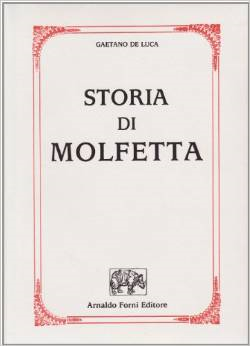 PROVERBS
PROVERBS
Scores of Molfettese proverbs exist and were used to describe people, ideas and events or had a didactic component. The following examples illustrate the wisdom and humor focus on the months of the year and the donkey, the most useful and beloved of animals.
The Months of the Year (Gerardo DeMarco, 1991)
Scennere – January
Scennere sicche, messare ricche
Dry January, rich harvest
Frebbrare – February
Furbe so, furebe me chieme: ci re voghie fa, re d’ugne
de re mene te fazze devela
Sly I am, sly I am called: if I wanted to do it, with
my claws I would send you flying (because it’s so cold)
Merze – March
Merze merzoene ogn’e pesc’esse da sott’o chiengoene
March, great March every fish comes out from under the rocks
Abrile – April
Abbrile, dolc’e dormire, ci ne menge tre volte la di, chieng’e sospire
April, sweet to sleep, if you don’t eat three times a day cry and sigh
(One’s appetite increased in the Spring)
Mesce – May
Quenne mesc’e uertelene pagghie asse e picche grene
When May is a truck farmer little hots of hay and little grain
Sciugne – June
A sciugne gratt’a gratte ca teiene la rugne
In June scratch, scratch because it has a scab
(Refers to raking the hard ground )
Lugghie – July
A lugghie av’affallite u chezzelare
In July the mollusk-seller closes down
(Fear of typhus if one eats raw mussels or clams)
Aguste – August
Aguste uegghie’e muste
August oil is moved
Settiembre – September
Tregghie de settiembre e occhiate d’ogn’e tiembe
September mullet and an eye to the weather
Ottobre – October
De vennegne s’enghi’u taine
The vat is full of the harvested grapes
Neviembre – November
A neviembre la femmen’e nziste enghie la casa de previste
In November the wise woman fills her house with provisions
Decembre – December
Send’a Necoele, noeve e sort a boene
St. Nicholas, news and good fortune
U Ciucce (The donkey)
Ci nesce ciucce nen mmoere cavadde
If you are born an ass you won’t die a horse
Quenn’u chiucce parla lataieno fenezze de munne
When the donkey talks Latin the world is coming to an end
Megghienu ciucce vaive ca nu miedeche muerte
Better a live donkey than a dead doctor
Quenne chende u ciucce e scerocche
When the donkey sings beware
U ciucce ca nen voel’ara acchie totte re versetaure
The donkey that doesn’t want to work finds all the excuses
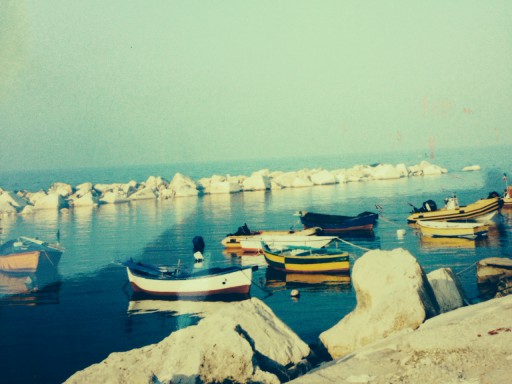
COMMON SAYINGS (Gerardo DeMarco, 1991)
A da chenzileie tutte so buene.
Everyone is good at giving advice.
Bell’o brutte la megghieiere du alte piasce a tutte.
Pretty or ugly everyone likes someone else’s wife.
Ne de feda ne de gevendaute ne de recchezze.
Don’t put your hopes on youth and wealth.
Metremoneie fra cuggine la cas’a la ruine.
Marriage among cousins the house in ruin.
Nesciaun’e nesce mbarate.
Nobody is born learned.
Nudde chiend’e nudde menge.
Nothing planted nothing harvested
Quenne se ne ve mesce nen ze menge chiu chemesce.
When May leaves one does not eat raw fish any longer.
Peiese chiu la penna ca la zappe.
The pen is heavier than the rake.
U proviedde menge alla chemben’e u ricche quenne le
teiene feme.
The poor eat when the bell rings, the rich when he is
hungry.
Acciaiete chiu la lengua ca la spate.
The tongue kills better than the sword.
La femmen’a berafatte l’acchiemendene tutte.
Everyone is going to look at a beautiful woman.
Quenne la zaite s’ha merdate tutte la volene pe
megghieiere.
When the bride is married everyone wants her for a
wife.
This is just a very short collection of the many examples of the Molfettese dialect. The spoken word of the poetry and the proverbs which was handed down generation after generation in Molfetta are amusing to the 21st century reader. Yet, through the centuries, to the common folk it was the way one learned life’s lessons, was inspired to do right, was given warnings, was diverted from their grim existence; it was a way of expressing fear, humor and even love. The harsh sounds did not impede the lessons that were passed along. There was a time when most of the inhabitants of Molfetta and other towns and cities of province of Bari only spoke dialectal Italian; the language was rich and alive then. We must bless the historians and writers who knew the worth of this language and permanently recorded it for future generations to appreciate.
Click to listen to a story in the Molfettese dialect: U CIUCCE DE CUMMA’ BELLUCCE by S. Magarelli


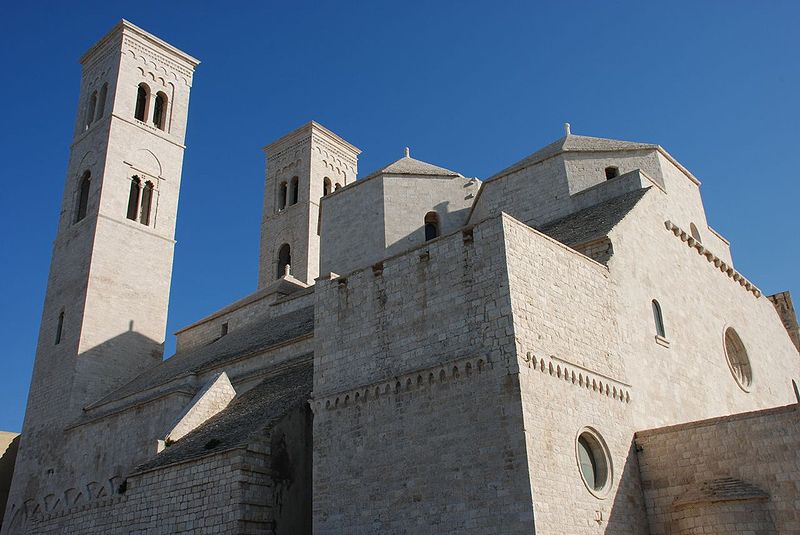






This is a very well researched and interesting article on the roots of the dialect from Molfetta (Bari).